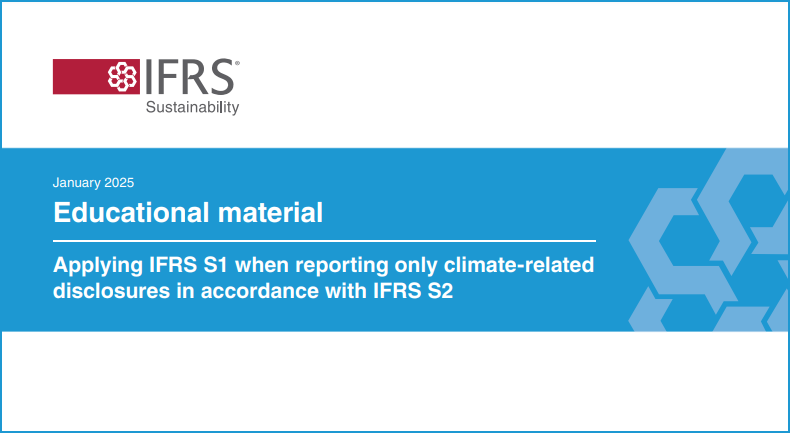IFRS Foundation Launches Roadmap Tool to Support ISSB Standards Readiness Globally
The IFRS Foundation has taken another step to support the global uptake of ISSB Standards by introducing the Jurisdictional Roadmap Development Tool – a new resource designed to help regulators map out their sustainability reporting strategies. Building on earlier guidance materials, the tool offers practical structure and decision support for jurisdictions at various stages of planning, while promoting alignment with the global baseline.

As part of its efforts to accelerate global adoption of the ISSB Standards, the IFRS Foundation has released the Jurisdictional Roadmap Development Tool – a practical guide to help jurisdictions plan their adoption strategies. Published on 26 March 2025, the tool offers a structured framework to support jurisdictions in navigating policy considerations and critical decision points that typically arise when planning to adopt or otherwise use ISSB Standards.
The Roadmap Tool builds on concepts introduced in the Inaugural Jurisdictional Guide for the adoption or other use of ISSB Standards (Jurisdictional Guide), translating them into a more operational and interactive format. Published in May 2024 alongside the Regulatory Implementation Programme Outline, the Jurisdictional Guide was developed to assist jurisdictions in designing tailored adoption strategies. Its aim is to promote globally consistent and comparable sustainability-related disclosures for capital markets through international use of the ISSB Standards.
The Guide also outlines the IFRS Foundation’s plan to publish jurisdictional profiles, which are intended to enhance transparency by detailing each jurisdiction’s progress toward alignment with the global baseline.
Supporting Jurisdictional Planning and Market Readiness
The Roadmap Tool is accompanied by reference roadmap templates that help jurisdictions not only structure their thinking but also assess the implications of alternative pathways.
Developing and communicating a detailed jurisdictional roadmap can be a valuable step in a jurisdiction’s journey to adopt or otherwise use ISSB Standards. A clear roadmap enables jurisdictions to articulate their objectives, identify milestones, assign responsibilities, and ensure accountability across all parties involved in the implementation process.
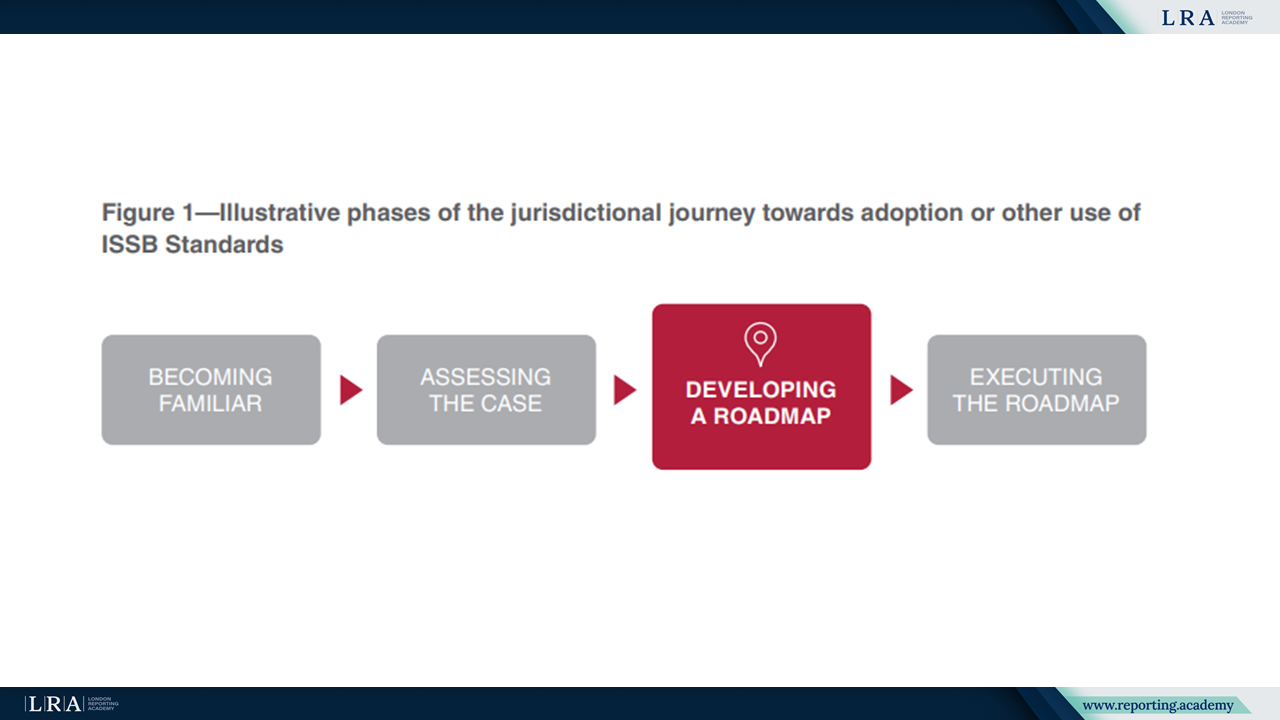
Source: Jurisdictional Roadmap Development Tool; IFRS Foundation.
Stakeholder engagement during the roadmap planning phase helps jurisdictions identify interdependencies in the reporting landscape and assess implementation needs. Early publication of such a roadmap supports preparers by giving them time to initiate planning before requirements become mandatory.
Core Decision Areas and Structure of the Tool
A well-developed roadmap should capture a jurisdiction’s decisions on the “how,” “who,” “what,” and “when” of sustainability disclosure adoption. These are mapped against the 11 jurisdictional features first introduced in the Jurisdictional Guide and now grouped under four core decision areas:
- Regulatory process (how?): establishing legal conditions for adoption and coordinating between authorities.
- Reporting entities (who?): identifying which entities are subject to requirements.
- Requirements (what?): defining the content, scope, location, and timing of disclosures.
- Readiness (when?): assessing implementation capacity and deciding on sequencing or phasing.
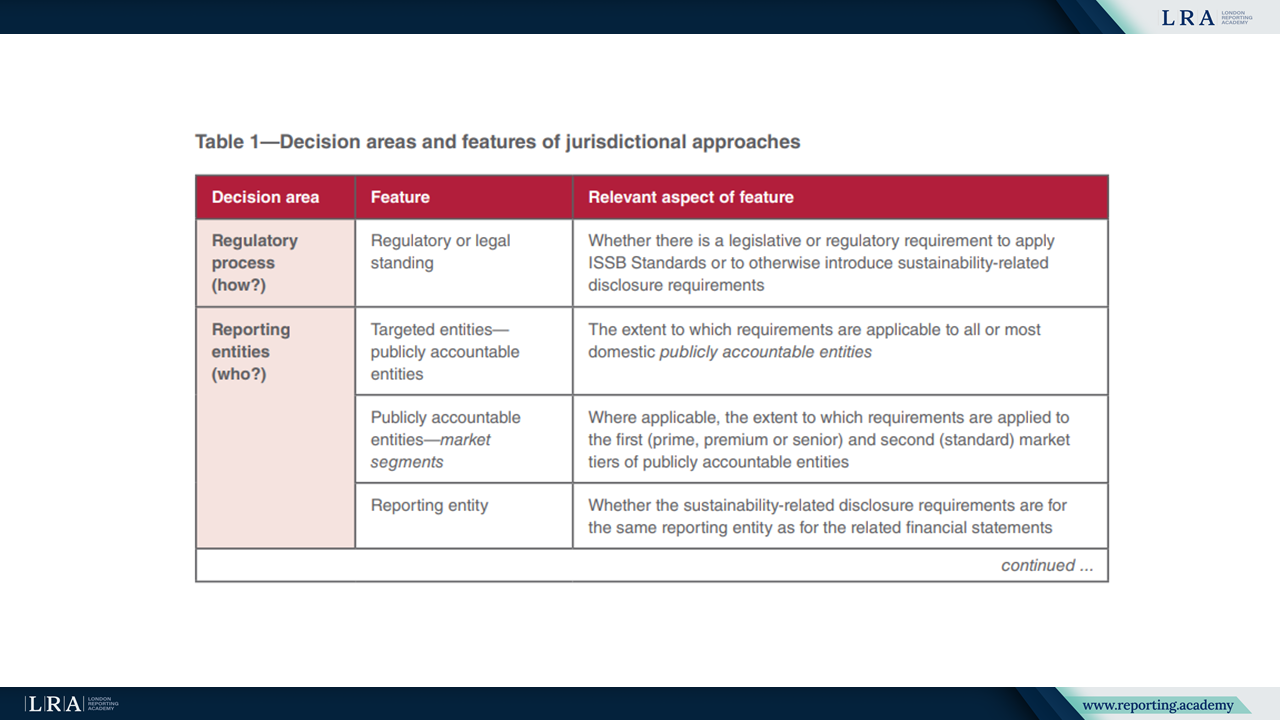
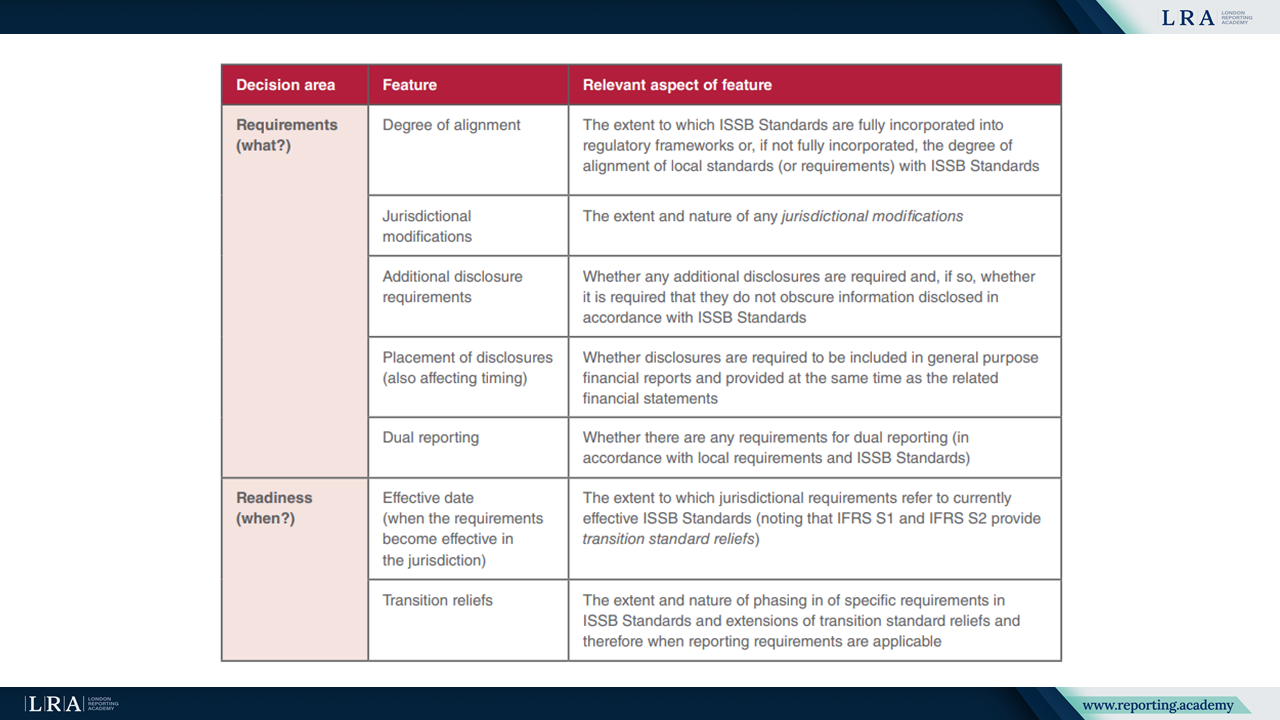
Source: Table 1; Jurisdictional Roadmap Development Tool; IFRS Foundation.
The Roadmap Tool itself is structured around the same four decision areas. For each, it includes:
- Guidance – summarising key issues and drawing from observed practices, consultations, and regulatory experience.
- Decisions and outcomes – identifying decision points, offering checklists, and illustrating outcomes using a colour-coded scheme: green for outcomes aligned with a “fully adopting” strategy, orange for alternative approaches.
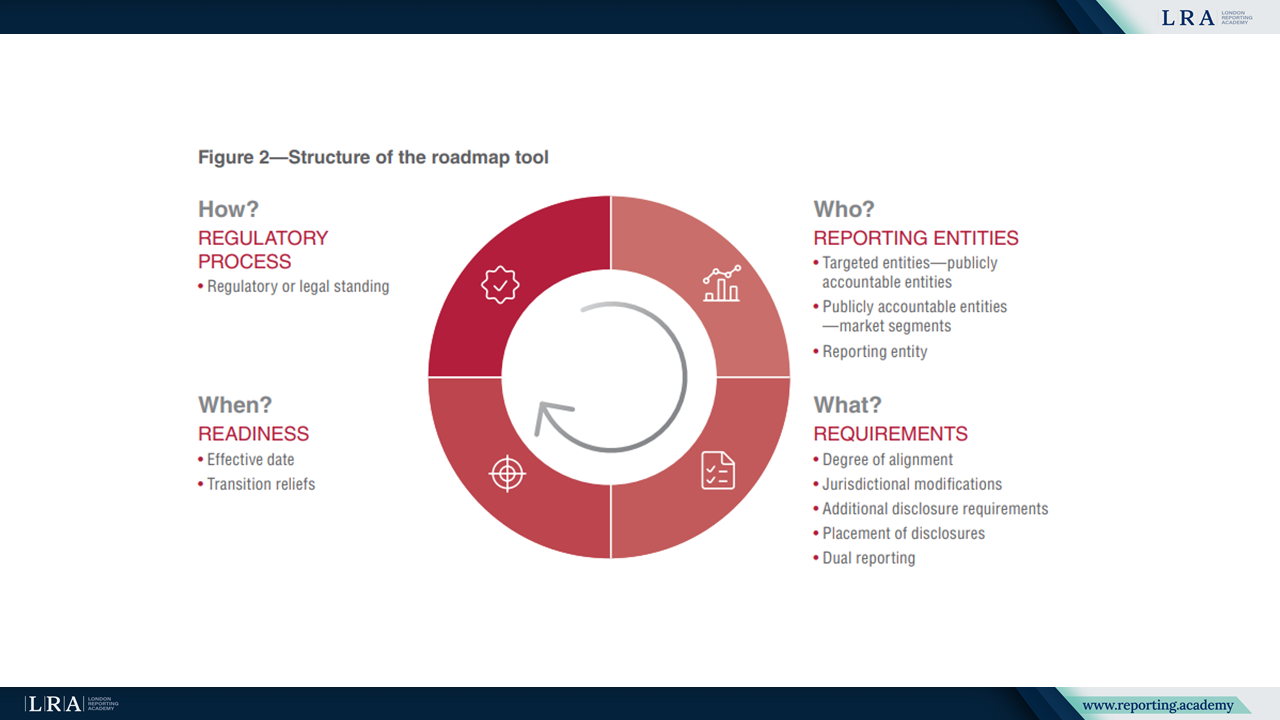
Source: Jurisdictional Roadmap Development Tool; IFRS Foundation.
This approach reflects the reality that jurisdictions’ legal frameworks, institutional arrangements, and market capacities vary – and helps policymakers evaluate the likely impact and clarity of their approach for both stakeholders and capital markets.
Templates and Jurisdictional Profiles
Roadmap templates demonstrate how jurisdictions’ decisions interact with these outcomes and how this may be reflected in their IFRS Foundation profiles. This level of transparency helps stakeholders understand both the current framework and future direction of sustainability reporting within a jurisdiction.
To support consistent application of the Roadmap Tool, reference templates have been developed for each of the jurisdictional approaches outlined in Section 3.4 of the Jurisdictional Guide (excluding the “committing to adoption” approach). These templates provide a practical lens through which jurisdictions can assess how their decisions across the 11 features interact and translate into recognisable implementation strategies.
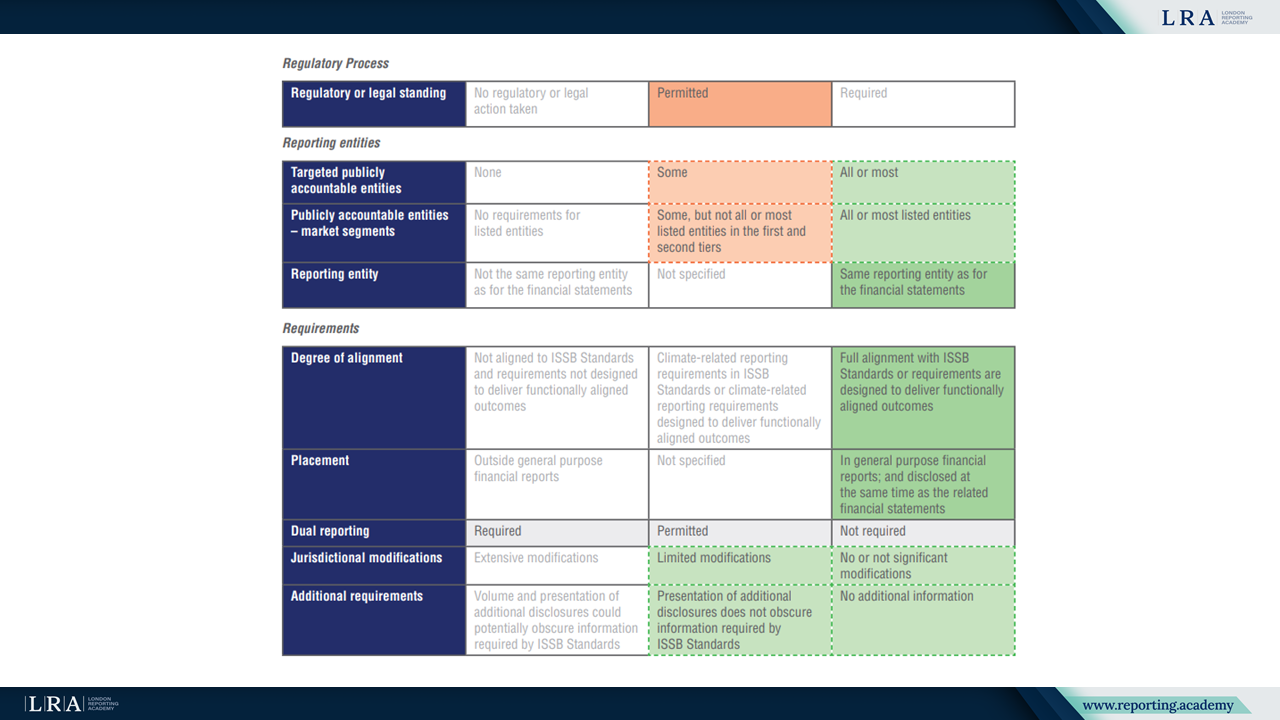
Source: Roadmap templates; Jurisdictional Roadmap Development Tool; IFRS Foundation.
The templates employ a colour-coded system:
- Green marks outcomes consistent with a “fully adopting ISSB Standards” description.
- Orange indicates departures from this approach, which may reflect different jurisdictional strategies.
- Grey denotes outcomes that do not influence the description of the jurisdictional approach.
Dashed lines and lighter shades help visualise where multiple outcomes may result in the same strategic description. Where templates combine green and orange indicators, jurisdictions are encouraged to assess the broader implications of those variations.
Templates are intended for illustrative purposes. Final jurisdictional profiles published by the IFRS Foundation will be based on a comprehensive review of each jurisdiction’s decisions, supported by direct engagement with local authorities. As such, actual profiles may differ from the reference templates.
Conclusion: Towards Greater Global Alignment
By offering clear guidance and practical support, the Roadmap Tool and accompanying templates provide jurisdictions with a structured way to align their sustainability reporting efforts with global standards. This initiative enhances transparency and comparability, and represents an important milestone in establishing a cohesive international sustainability reporting system.

